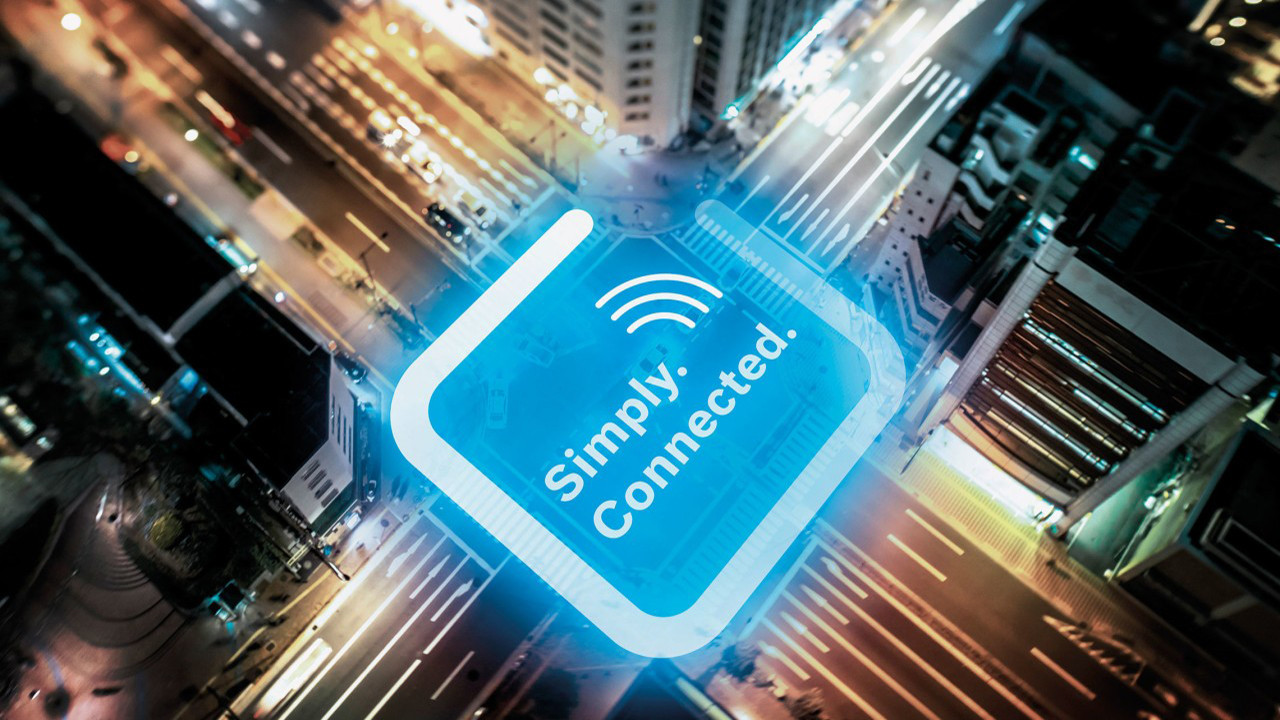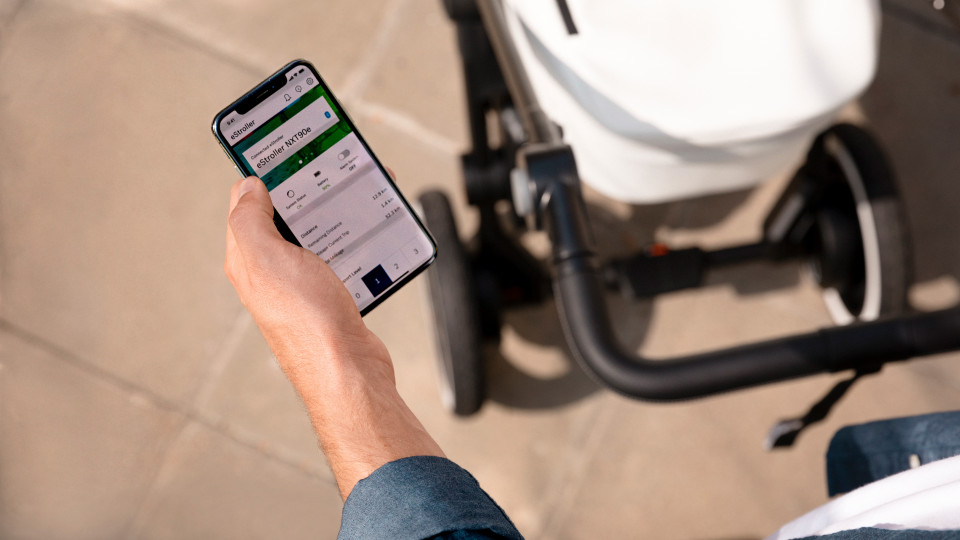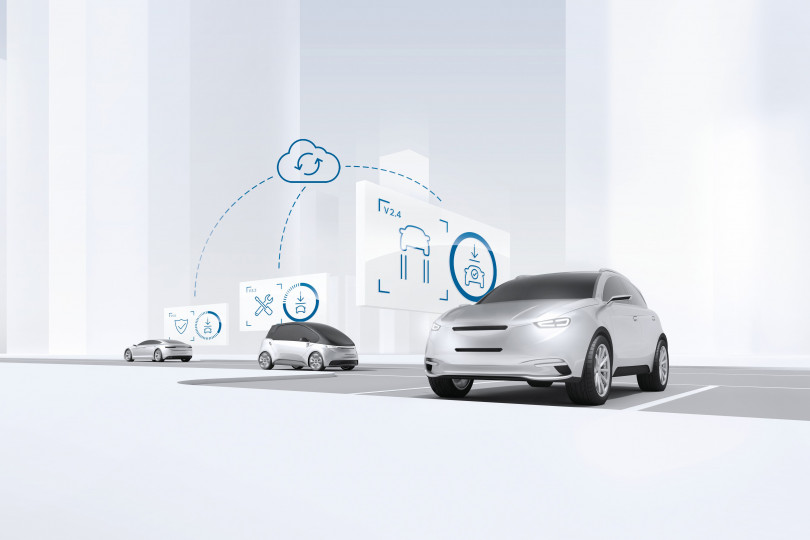Berlin – What do cars, mobile machinery, an energy provider’s data platform, and baby buggies have in common? Their connectivity comes courtesy of the Bosch IoT Suite, the core product of Bosch.IO, the new wholly owned Bosch subsidiary. The subsidiary has already deployed its IoT platform to carry out more than 250 IoT projects jointly with customers in the retail, energy, building, manufacturing, consumer goods, agriculture, and mobility sectors. “Bosch.IO projects epitomize the efficient development of scalable and secure IoT solutions using the cloud and the open-source-based Bosch IoT Suite,” says Dr. Stefan Ferber, a member of the Bosch.IO executive management. The Bosch IoT Suite services customers opt for are then integrated into the cloud environments the customers prefer for their projects.
Versatile and proven
The Bosch IoT Suite is the core enabler of Daimler’s firmware over-the-air updates. Some four million car owners already receive new versions of vehicle software – for example, infotainment system updates – conveniently and securely via the cellular network. This means they no longer have to visit their dealer solely to get a software update. The Bosch IoT Suite is the communication hub for vehicles on the receiving end of wireless updates.
For the Swedish baby buggy manufacturer Emmaljunga, Bosch has developed an assistance system with an extensive set of comfort and safety features. Called eStroller, it comes with powered push and automatic brake assist functions, as well as a link to a smartphone app. Based on the Bosch IoT Suite, this app puts added features such as an alarm function at users’ fingertips.
The energy provider EWE uses the Bosch IoT Suite to manage power consumption data in an efficient way. This also opens the door to value-added services. For example, the data can be used to analyze consumption and provide detailed, clear information about the biggest electricity consumers in the home. This helps users save energy.
The Bosch IoT Suite is not only used by customers such as Daimler, Emmaljunga, and EWE, but is also the central software platform for Bosch IoT solutions. For example, the Suite connects smart cameras from Bosch Building Technologies with the cloud and existing backends. This connection provides a cost-effective means of managing cameras throughout their life cycles and updating devices’ and gateways’ software and firmware.
A use case at Bosch Rexroth illustrates how the Bosch IoT Suite can be adapted to the requirements of the manufacturing sector. This Bosch subsidiary, which specializes in drive and control technology, used the Bosch IoT Suite to build BODAS Connect, its solution for mobile machinery. Open and scalable, this solution for end-to-end connectivity affords access to specific machine information. After-sales services such as software updates can be delivered at the touch of a button, even without service staff present on site. Reform, a manufacturer of municipal and agricultural vehicles, has also adopted BODAS Connect to quickly troubleshoot malfunctions in its mobile machinery.
Focus on edge computing and AI
The Bosch IoT Suite already connects more than ten million sensors, devices, gateways, and machines with their users and enterprise systems. And as Bosch IoT solutions increasingly feature artificial intelligence (AI), these systems will become more and more intelligent in the future. Bosch uses AI and the internet of things (IoT) to make people’s lives easier and as safe as possible. Connecting devices directly to the cloud is one way to go, but more and more use cases are incorporating edge computing to great benefit. An edge device is internet-enabled, but can process its data locally. These devices send less data to the cloud to make the most of IT resources available across the network. The local logic enables these devices to respond faster and automatically to events. “More than 33,000 edge devices are now compatible with Bosch IoT Suite and connected via many protocols, both locally and over the internet,” Ferber says.
In the future, Bosch.IO will also focus on pre-configured service packages that allow customers to implement IoT solutions more efficiently. To make these packages, experts combine various Bosch IoT Suite service modules. One such module is the Bosch IoT Hub, an upscalable service for directly connecting (edge) devices via a gateway to the Bosch IoT Suite. It supports connections using standard and customer-specific protocols. “From device to cloud, customers can use our new portfolio to make their own integrated IoT applications,” Ferber says.
Rated positively by analysts
The Bosch IoT Suite is based on open-source software developed jointly by experts from Bosch and other companies in the Eclipse IoT working group. That makes the platform unusually versatile. In its latest report, PAC – a consultancy that is part of the teknowlogy Group, the leading independent European research and consulting firm for IT companies – rated the Bosch IoT Suite as the best in class among all open-source-based IoT platforms. “We are delighted with this excellent rating for the Bosch IoT Suite,” Ferber says. “Over the medium term, we expect the market for IoT platforms to consolidate. Of the estimated three to five platforms that will prevail, one will be open-source-based.”
Zita Hella Varga
Phone: +36 70 667-6374
The Bosch Group is a leading global supplier of technology and services. It employs roughly 403,000 associates worldwide (as of December 31, 2019). According to preliminary figures, the company generated sales of 77.9 billion euros in 2019. Its operations are divided into four business sectors: Mobility Solutions, Industrial Technology, Consumer Goods, and Energy and Building Technology. As a leading IoT company, Bosch offers innovative solutions for smart homes, smart cities, connected mobility, and connected manufacturing. It uses its expertise in sensor technology, software, and services, as well as its own IoT cloud, to offer its customers connected, cross-domain solutions from a single source. The Bosch Group’s strategic objective is to deliver innovations for a connected life. Bosch improves quality of life worldwide with products and services that are innovative and spark enthusiasm. In short, Bosch creates technology that is “Invented for life.” The Bosch Group comprises Robert Bosch GmbH and its roughly 440 subsidiary and regional companies in 60 countries. Including sales and service partners, Bosch’s global manufacturing, engineering, and sales network covers nearly every country in the world. The basis for the company’s future growth is its innovative strength. At 125 locations across the globe, Bosch employs some 72,000 associates in research and development.
The company was set up in Stuttgart in 1886 by Robert Bosch (1861–1942) as “Workshop for Precision Mechanics and Electrical Engineering.” The special ownership structure of Robert Bosch GmbH guarantees the entrepreneurial freedom of the Bosch Group, making it possible for the company to plan over the long term and to undertake significant upfront investments in the safeguarding of its future. Ninety-two percent of the share capital of Robert Bosch GmbH is held by Robert Bosch Stiftung GmbH, a charitable foundation. The majority of voting rights are held by Robert Bosch Industrietreuhand KG, an industrial trust. The entrepreneurial ownership functions are carried out by the trust. The remaining shares are held by the Bosch family and by Robert Bosch GmbH.
Additional information is available online at www.bosch.com, www.iot.bosch.com, www.bosch-press.com, www.twitter.com/BoschPresse





